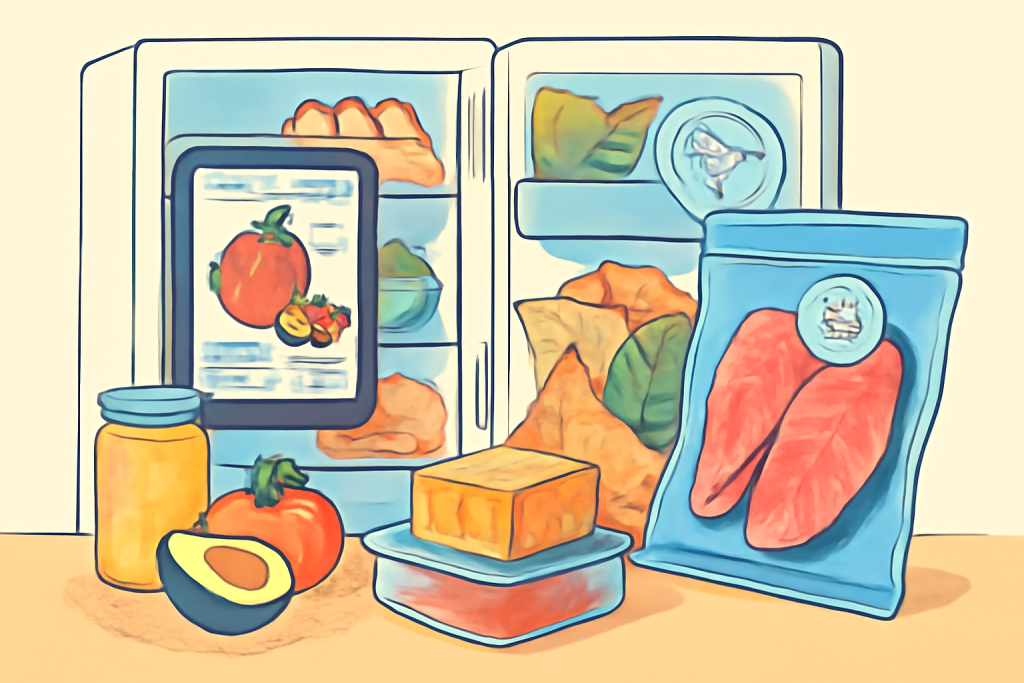Food waste is at an all-time high, with households discarding hundreds of dollars in spoiled groceries each year. But thanks to new smart storage technologies and updated best practices, you can cut down on waste, save money, and keep your food fresh longer.

The Rising Cost of Spoilage
In the United States, approximately 30-40% of the food supply is wasted, equating to about 60 million tons of produce discarded annually (RTS, n.d.). For the average household, this translates into roughly $1,500 worth of wasted groceries every year. Not only does this impact your wallet, but it also exacerbates global food insecurity and environmental issues like methane emissions from landfills.
Why Food Spoils: Common Culprits
Understanding what causes spoilage is key to preventing it. Common contributors include:
- Improper temperature control in refrigerators or freezers
- Overstocking or poor organization, leading to forgotten or hidden items
- Moisture and air exposure, which accelerate bacterial and mold growth
- Misunderstanding expiration labels, leading to premature disposal
Technological Innovations That Are Changing the Game
AI-Powered Storage Solutions
AI-powered refrigerators now monitor internal conditions in real-time. These devices can adjust temperature and humidity levels automatically based on the type of food stored. Some models even use built-in cameras and sensors to track food expiration dates, notifying users through smartphone apps when items are nearing spoilage (Lightspeed, n.d.).
Smart Packaging and Sensors
Packaging isn’t just about aesthetics anymore. Modern packaging solutions now include time-temperature indicators (TTIs), RFID tags, and even biosensors that react to microbial activity. These features give consumers better insight into the actual freshness of the product, going beyond arbitrary expiration dates (Wikipedia, n.d.-a).
For example, vacuum-sealed bags with oxygen absorbers are commonly used for meats and perishables, dramatically increasing shelf life. Vacuum-sealing prevents the oxidation that leads to spoilage and nutrient loss.
Modified Atmosphere Packaging (MAP)
MAP involves altering the gas mixture inside food packaging. By reducing oxygen and increasing carbon dioxide, this technique slows microbial growth and oxidation. It’s widely used in the meat, fish, and fresh produce industries and can double or even triple shelf life (Wikipedia, n.d.-b).
Smart Kitchen Appliances
Beyond fridges, a host of other smart appliances now support better food management:
- Smart freezers log and track food inventory.
- Vacuum sealers remove air from packaging to extend freshness.
- Sous vide cookers allow bulk prep and long-term food storage without loss of quality.
Practical Food Storage Tips You Can Apply Today
Not everyone has access to cutting-edge tech, but there are practical steps anyone can take to reduce spoilage significantly.
1. Organize Your Fridge Like a Pro
- Top Shelves: Best for ready-to-eat foods like leftovers, drinks, and herbs.
- Middle Shelves: Ideal for dairy products.
- Bottom Shelf: Store raw meat, poultry, and fish here in a leak-proof container.
- Crisper Drawers: Use high-humidity drawers for leafy greens and low-humidity ones for fruits.
The optimal fridge temperature is 37°F (3°C), while freezers should be at 0°F (-18°C) (FDA, n.d.).
2. Understand Expiry Dates
“Sell by,” “best by,” and “use by” labels often confuse consumers. These dates usually refer to quality, not safety. According to the USDA, most foods remain safe to eat past the “best by” date if stored correctly (Save More Than Food, 2025).
3. Freeze with Purpose
Freezing is one of the best methods to extend shelf life. Some freezing tips:
- Label everything with the freeze date.
- Freeze individual portions to avoid defrosting more than needed.
- Blanch vegetables before freezing to preserve texture and color.
4. Use Airtight Containers and Glass Jars
Reusable, airtight glass containers are ideal for storing dry goods like grains, nuts, and flours. They protect against humidity and pests while allowing easy visibility of contents.
5. Implement FIFO (First In, First Out)
Always rotate older food to the front and place newer items in the back. This simple system ensures nothing gets forgotten and spoils at the back of your fridge or pantry.
6. Monitor Humidity Levels
High humidity is great for greens, but terrible for mushrooms and berries. Store mushrooms in paper bags, and keep berries dry and refrigerated in breathable containers to prevent mold growth.
7. Embrace Eco-Friendly Wrapping
Beeswax wraps are an excellent alternative to plastic. They are breathable, antibacterial, and reusable—ideal for wrapping cheese, bread, and vegetables (Wikipedia, n.d.-c).
Emerging Trends in Sustainable Storage
Edible and Biodegradable Packaging
Researchers are developing packaging made from milk protein, seaweed, and even mushrooms. These biodegradable options reduce waste and keep food fresh by forming protective, breathable layers.
Community Fridge Networks
Some neighborhoods are setting up shared fridges where surplus food can be dropped off and picked up by others. It’s a grassroots way of fighting food waste and hunger simultaneously.
AI-Driven Food Waste Apps
Apps like “Too Good To Go” and “Olio” connect people with businesses and neighbors to redistribute surplus food. Many of these tools integrate directly with smart kitchen systems for real-time management.
Final Thoughts: Small Changes, Big Impact
Adopting a few smart food storage habits can significantly reduce your household’s food waste, save money, and lessen your environmental footprint. Whether you’re investing in the latest AI fridge or simply reorganizing your pantry, every action counts.
By combining traditional wisdom with modern innovation, we can tackle food spoilage head-on and create a more sustainable food system.
References
- RTS. (n.d.). Food Waste in America in 2025: Statistics & Facts. Available at: https://www.rts.com/resources/guides/food-waste-america/ (Accessed: 22 May 2025).
- Lightspeed. (n.d.). 21 Emerging Technologies Helping Reduce Food Waste. Available at: https://www.lightspeedhq.com/blog/food-waste-emerging-technologies/ (Accessed: 22 May 2025).
- Wikipedia. (n.d.-a). Active packaging. Available at: https://en.wikipedia.org/wiki/Active_packaging (Accessed: 22 May 2025).
- Wikipedia. (n.d.-b). Modified atmosphere. Available at: https://en.wikipedia.org/wiki/Modified_atmosphere (Accessed: 22 May 2025).
- Save More Than Food. (2025). The Ultimate Guide to Storing Food Properly to Reduce Waste. Available at: https://savemorethanfood.org/2025/01/the-ultimate-guide-to-storing-food-properly-to-reduce-waste/ (Accessed: 22 May 2025).
- Wikipedia. (n.d.-c). Beeswax wrap. Available at: https://en.wikipedia.org/wiki/Beeswax_wrap (Accessed: 22 May 2025).









